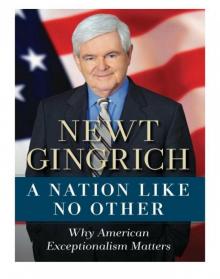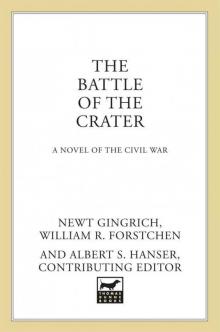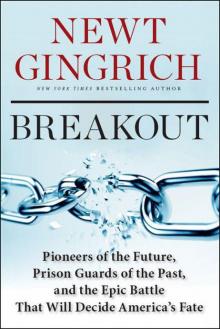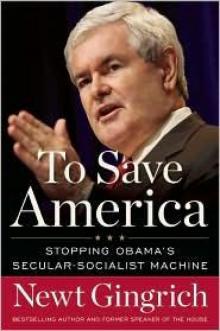- Home
- Newt Gingrich
Understanding Trump Page 27
Understanding Trump Read online
Page 27
Project 11: Require all new higher-education construction to be fully funded and include a maintenance and upkeep trust. Some colleges have doubled their buildings without adding a single student.
Project 12: The College of the Ozarks is a remarkable work-study institution. Over 92 percent of the students graduate debt-free. Every state should establish one or more work-study colleges so anyone willing to work can get an education.
Project 13: Replace tenure for college professors with five- to seven-year revolving contracts comparable with contracts for sports coaches. Both teaching effectiveness and ideological honesty require a more disciplined approach to education staffing. Academic freedom has mutated into freedom to coerce by left-wing factions.
Project 14: Establish a student’s right to complain. The amount of ideological bullying and one-sided fake lecturing present today is intolerable. Students should be entitled to complain about bad and bullying professors, and the professors should face sanctions.
CAPABILITY PROJECTS
Our Wounded Warrior programs offer vivid proof that people can overcome extraordinarily difficult challenges. Modern medicines and technologies can enable people to be productive when they have conditions that a generation ago would have taken them permanently out of the workforce.
Project 15: Each state and local government should get one-year and ten-year assessments of the direct and indirect costs of the dependency-disabilities culture. Indirect costs would include lost tax revenue from people not working. This sets the scale of both the human and financial opportunity for a successful capabilities-focused program.
Project 16: Retrain every human resources manager dealing with workers’ compensation and disabilities to approach each person by asking how to maximize their independence, productivity, and achievement
Project 17: Create centers for capabilities where modern science, technology and experience working with people with special needs can be combined to develop the most powerful possible program to help people truly pursue happiness whatever their challenges.
WORK PROJECTS
For more than two generations, we have adopted antiwork, propassive dependency policies. We separated children from their fathers to get welfare. We made it harder and more expensive to open small businesses. Big cities are especially anti–small business, with arrogant bureaucracies, licensing fees, taxes, and red tape. Los Angeles mayor Richard Riordan once told me a friend tried to build a factory in the poorest part of LA and gave up after eighteen months because the bureaucracy was unresponsive.
Project 18: Review every licensing requirement and eliminate, shorten, or simplify virtually all of them. Licensing and permitting became a creative tool to minimize competition. There are more than 100,000 licenses in America today, and a large percentage have absurd requirements that restrict trade. Virtually all licenses make it harder and more expensive for minority members to enter trades.
Project 19: Review all laws that inhibit work. Recognize that modern technologies allow young people to be productive safely at a much earlier age. Laws growing out of child labor in coal mines and sweatshops may now hurt young people more than help them. Establish apprenticeship and internship rules to get willing young people into productive behavior.
Project 20: Ask small businesses which procedures, regulations, and taxes make it harder to start up and harder to hire more people. Establish websites where bad, arrogant, and rude bureaucrats can be reported.
Project 21: Anywhere you see a line of people interacting with government representatives, ask why. Technology enables us to have people online instead of standing in line. Every bureaucratic line in state and local government offices should be replaced with smart technology that allows people to instead easily interact with government online. Global Entry for returning to the United States is a good example of how technology can streamline a long government process. The goal should be to focus on making life easier for citizens rather than for bureaucrats.
Project 22: A job remains the best welfare policy. A goal should be set to make all government assistance tied to some level of effort. America Works is a remarkably successful company in New York City that specializes in getting the hard-core unemployed back to work and helping prisoners transition from jail to full employment. Its founder is adamant—after more than thirty years of experience—that everyone should be required to do work to receive aid (with the sole exception of the most severely challenged).
JOB-CREATION PROJECTS
It is virtually impossible to overstate the critical role that job creation plays in a healthy, stable, free society. New jobs improve take-home pay, wealth creation, and retirement funds, and increase revenue for government and charity, as well as fostering a sense of upward mobility and declining social tension as people believe their lives and their children’s lives will improve.
Project 23: Every state and local government should authorize a special commission of job creators to measure every policy and regulation against its impact on job creation.
NEW BUSINESS PROJECTS
For long-term job and wealth creation, small businesses are far more important than big businesses. Yet governors and mayors spend more time wooing big businesses rather than thinking about how to launch the maximum number of young businesses, which can grow into medium-size and big businesses.
Project 24: Establish an annual survey of business start-ups. Interview founders and find out what helped and hurt them. Canvass for potential start-ups and find what is holding them back.
Project 25: Ask every small and medium-size business under what circumstance they would hire more people every year.
Project 26: Use an entrepreneurial survey to identify young people and link them with early entrepreneurship opportunities—starting their own companies in middle school or high school. Gallup’s Builder Profile 10 is a survey that has a good track record of identifying entrepreneurial talent.
FAMILY PROJECTS
Families are the bedrock of our society. Strong families create strong, safe, prosperous communities.
Project 27: Review every law and regulation to determine whether they undermine and weaken families. Then recommend steps to make them profamily instead of antifamily rules.
ANTICORRUPTION PROJECTS
Historically one of the key differences between third-world societies and the United States has been the difference in corruption. The United States was founded in part in response to the corruption that held together the British government.
Five different forces have led to a dramatic increase in corruption as government has grown—crony capitalism, special interests, fast technology, slow bureaucratic adaptation, and dependency-based culture—all of which encourage theft and dishonesty.
At the federal level, it’s estimated that theft and fraud add up to more than $200 billion a year, which is well over $2 trillion a decade. That doesn’t count cost overruns.
Project 28: Bring in the most effective antifraud systems in your state and ask them how they would design your payment systems to minimize theft and corruption.
SAFETY PROJECTS
There is no effective freedom without safety. There is no ability to pursue happiness without safety. The poor are especially vulnerable and likely to be exploited when there is no safety.
Project 29: State and local governments that have a violent community should establish a CompStat commission to explore what works and apply it relentlessly until neighborhoods become safe. (CompStat was the system used by Mayor Giuliani to achieve a huge reduction in crime in New York City.)
Project 30: Review the actions of conservative states that have used the right kind of criminal justice reform to reduce crime, reduce the number of prisoners, increase safety, and reduce prison costs for the taxpayer. When governors like Rick Perry of Texas, Nathan Deal of Georgia, and Nikki Haley of South Carolina can all point to less crime, more former prisoners transitioning to jobs and citizenship, and lower costs with fewer prisons, somethin
g profound is happening.
Project 31: Establish a working group on the opioid epidemic and the emerging potential to use medication-assisted treatment to dramatically save lives, return people to work, and create healthier communities.
Project 32: Review prison populations to determine how many prisoners need mental health treatment. In some states over half the prisoners are mental patients who should not be imprisoned. It is more humane and much less expensive to develop an effective mental health strategy rather than to lock up noncriminals.
Project 33: Each state should review its Medicaid program to ensure that true mental health parity is being enforced, so we can help people cope with mental health and addiction strategies before they become prisoners.
Project 34: Develop multiyear budgeting at the micro level to measure the true costs of incarcerating rather than treating people.
STATE CAPABILITY PROJECTS
Liberals have a bias against state and local government—and a deep commitment to centralizing power in Washington. Consequently, they ignored state achievements and favored federal bureaucrats even when the results were weaker or more expensive. In fact, a number of state forest departments keep healthier, more effective forests at lower costs than the National Forest Service does.
Project 35: Assess every aspect of duplicative state and federal activities. In instances in which the state is doing a better job, the state should offer to contract with the federal government to take over the activity for a fee. The federal government can set standards and monitor outcomes while the state government handles the work. This is the Phillip Howard model.
If our leaders at the state level can take these principles to heart—and put these projects to the test—it will dramatically improve people’s lives and solidify Trump’s vision for the country. This is a watershed moment. This is our chance to make America great again.
CHAPTER FIFTEEN
THE ROAD AHEAD
I hope Understanding Trump has given you a better sense of the extraordinary figure who has become the forty-fifth president of the United States.
Keep this in mind: his presidency is a work in progress.
Every day, he learns more about the complexities of the government, the country, and the world he is trying to lead.
The hypernegative media will continue to attack every change, every evolution, every twist and turn.
The media’s passion to find or interpret Trump negatively is amazing.
As I was writing the concluding chapters for Understanding Trump, one reporter attacked the president for praising President Andrew Jackson one week (while in Jackson’s home state of Tennessee) and then praising Henry Clay the following week (while in Clay’s home state of Kentucky). According to the reporter, this showed ignorance. Jackson and Clay were bitter enemies. How could President Trump praise both of them, the reporter asked in scornful language.
When I read this, I became very angry. The arrogance and shallowness of his column got to me.
First, it is normal for presidents to say nice things about great men whose home state they visit. Jackson and Clay may have been bitter opponents, but both were great Americans.
Second, you can praise political opponents for different characteristics and be totally coherent. Jackson was a great populist. Clay was a great advocate for putting America first in economic policy. President Trump can praise each for his policies in different areas.
Similarly, it is totally legitimate to admire Thomas Jefferson’s political commitment to having every person participate in the republic and Alexander Hamilton’s dedication to economic growth through market-oriented capitalism. The two men may have been bitter rivals, but Jefferson focused on making us free while Hamilton focused on making us economically strong enough to maintain our freedom.
In fact, you can argue that the genius of Lincoln was his ability to synthesize Jefferson’s government of, by, and for the people with Hamilton’s and Clay’s style of economics and nationalism.
My advice to analysts is to quit overanalyzing and trying to diminish President Trump.
The key to our future is not changing Trump.
The key is changing Washington and America. We must get back to a healthier path to make America great again.
There are five key challenges for President Trump on the road to success:
1. Creating jobs
2. Maintaining global stability
3. Learning to lead Congress
4. Learning to profoundly change the entrenched bureaucracy
5. Establishing goals so large they build huge momentum for a better future
Let’s explore each one.
First, if President Trump can get America back to the 5 percent or greater annual growth it achieved under Reagan, he will be reelected in a landslide in 2020. Americans want jobs for themselves and their children. They want higher take-home pay, and increasing wealth for their 401(k)s and pension funds.
If President Trump can deliver that kind of economy, people will overlook almost everything else and vote to keep him and the “Trump prosperity.” On the other hand, if he can’t create this kind of economic growth, almost nothing else will build an electoral majority.
Second, I am writing in early April during the Syrian and North Korean flashpoints. It is not clear what the outcome will be. What is clear is that the United States is the indispensable leader. When only North Korea, Iran, and Russia joined Syria in complaining about the US Tomahawk missile response to the use of poison gas, it was clear a new global community was emerging. Ironically, it was a Trump-led rather than an Obama-orated community.
It was clear that the Chinese visit to Mar-a-Lago paid dividends when China abstained rather than opposed the United States on Syria in the UN Security Council. Russia was left isolated.
As I write, the vice president is in South Korea, the secretary of defense is in Saudi Arabia, and the National Security Adviser is in Afghanistan.
It is increasingly clear that Trump’s vision of America First involves leading the world rather than withdrawing from it. It is also clear he is rapidly building worldwide friendships that will help him in that leadership.
If he can strengthen the forces of freedom, law, and prosperity while weakening the forces of terrorism and tyranny—and do so without a major war—he will be seen as a remarkably successful president by 2020.
Third, the initial failure of the House Republican health bill was a sign President Trump had not yet mastered the art of leading the legislative branch. As I write, a number of very smart, serious people in the legislative and executive branches are working to redraft the health bill. They are working to make it stronger and to enable it to pass the House, the Senate, and a conference committee, which then must again pass both the House and the Senate.
Legislating major change is an extraordinarily difficult and challenging art form. Health care is one-fifth of the economy and a matter of life and death. It should not shock us that it is hard to reform—or that many powerful interests get involved because they think it is their money.
Also, repealing Obamacare is inherently and unavoidably partisan.
However, most legislating can be bipartisan if it is set up correctly. When we passed welfare reform in 1996 (the largest conservative policy reform in our lifetime) we split the Democrats exactly evenly with 101 for and 101 against. When we passed Reagan’s tax cuts in 1981, one out of every three House Democrats voted for the Reagan bill.
President Trump has the potential to reach out and build Trump majorities in the House and Senate. He could potentially gain a 275-seat Trump majority in the House and a 65-vote bloc in the Senate. It would require a Reagan-like focus on arousing the grassroots and running public campaigns to build support for ideas and legislation. Of course, that is something candidate Trump did brilliantly.
Fourth, the depth of bureaucratic resistance is only beginning to be obvious. A successful Trump administration will have to develop very profound reforms to ga
in control of the civil service and ensure it is both modernized and responsive to the values of the American people. This zone may be the greatest test of whether President Trump is merely a successful commander in chief or a truly historic one.
Fifth, making America great again requires doing great things. Washington is a city that loves to bog leaders down in gossip, petty squabbles, and irrelevant noise. The greatest American leaders somehow cut through all that distraction and focus on big breakthroughs.
In his historic February 2017 address to a joint session of Congress, President Trump described the 250th anniversary of the Declaration of Independence in 2026. He noted that on the 100th anniversary there had been a great exhibition of progress in Philadelphia.
Now, at the beginning of the Trump administration, is a good time to set great goals for 2026.
Imagine the following very real possibilities for the 250th anniversary:
• A nonaddictive painkiller will have replaced opioids, saving thirty-three thousand lives a year.
• Alzheimer’s will have been detected early and contained for five years or longer, cutting the costs of treatment by 50 percent and eliminating a huge amount of pain for caregivers and loved ones.
• Self-regenerating kidneys will have replaced kidney dialysis, saving billions of dollars and giving millions more complete, independent lives.

 1945
1945 Collusion
Collusion Trump's America
Trump's America Shakedown
Shakedown A Nation Like No Other
A Nation Like No Other To Try Men's Souls - George Washington 1
To Try Men's Souls - George Washington 1 Pearl Harbor: A Novel of December 8th
Pearl Harbor: A Novel of December 8th Valley Forge: George Washington and the Crucible of Victory
Valley Forge: George Washington and the Crucible of Victory To Save America
To Save America Grant Comes East cw-2
Grant Comes East cw-2 Victory at Yorktown: A Novel
Victory at Yorktown: A Novel Days of Infamy
Days of Infamy The Battle of the Crater: A Novel (George Washington Series)
The Battle of the Crater: A Novel (George Washington Series) Breakout: Pioneers of the Future, Prison Guards of the Past, and the Epic Battle That Will Decide America's Fate
Breakout: Pioneers of the Future, Prison Guards of the Past, and the Epic Battle That Will Decide America's Fate Pearl Harbour and Days of Infamy
Pearl Harbour and Days of Infamy Pearl Harbour - A novel of December 8th
Pearl Harbour - A novel of December 8th Understanding Trump
Understanding Trump To Save America: Abolishing Obama's Socialist State and Restoring Our Unique American Way
To Save America: Abolishing Obama's Socialist State and Restoring Our Unique American Way